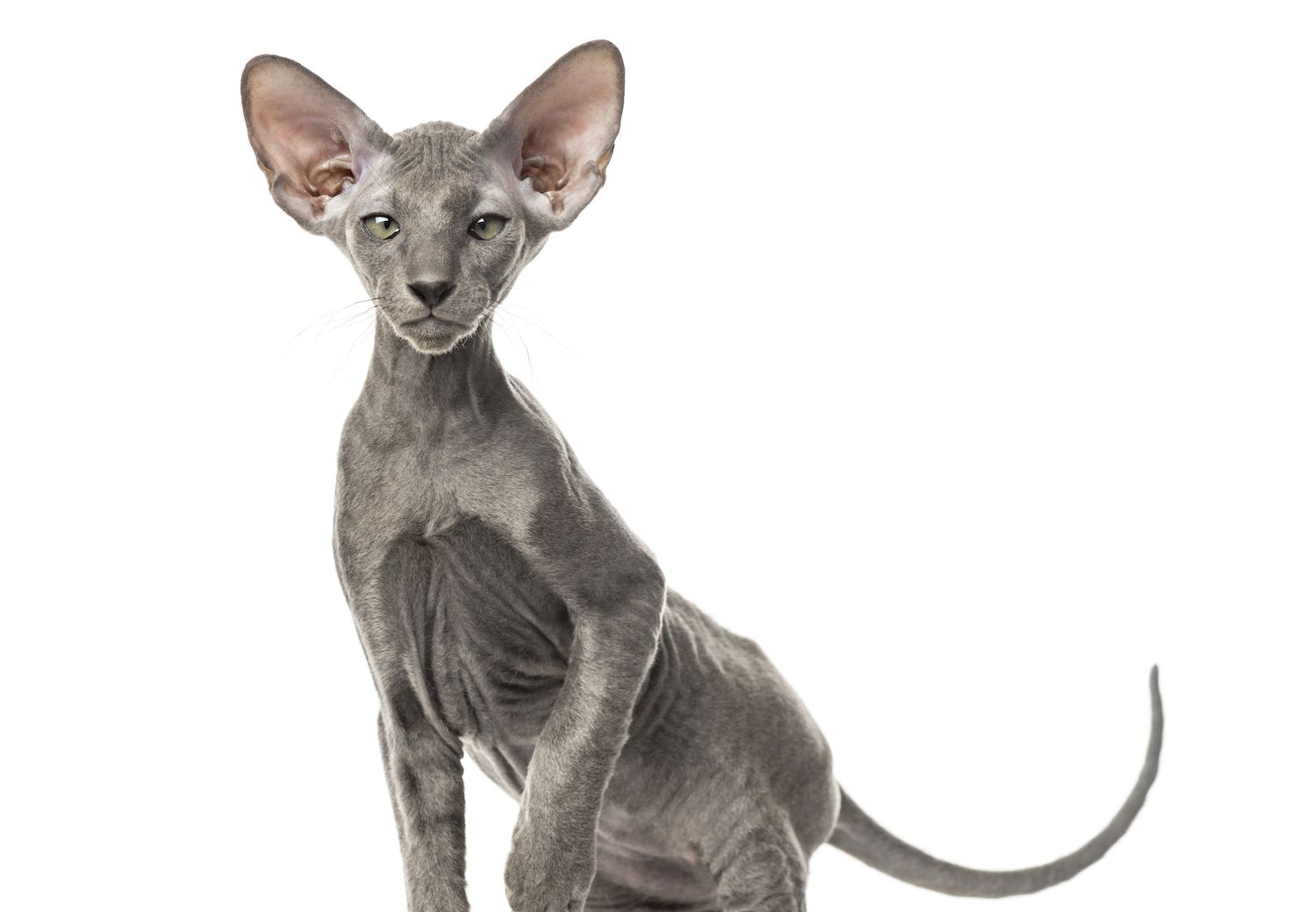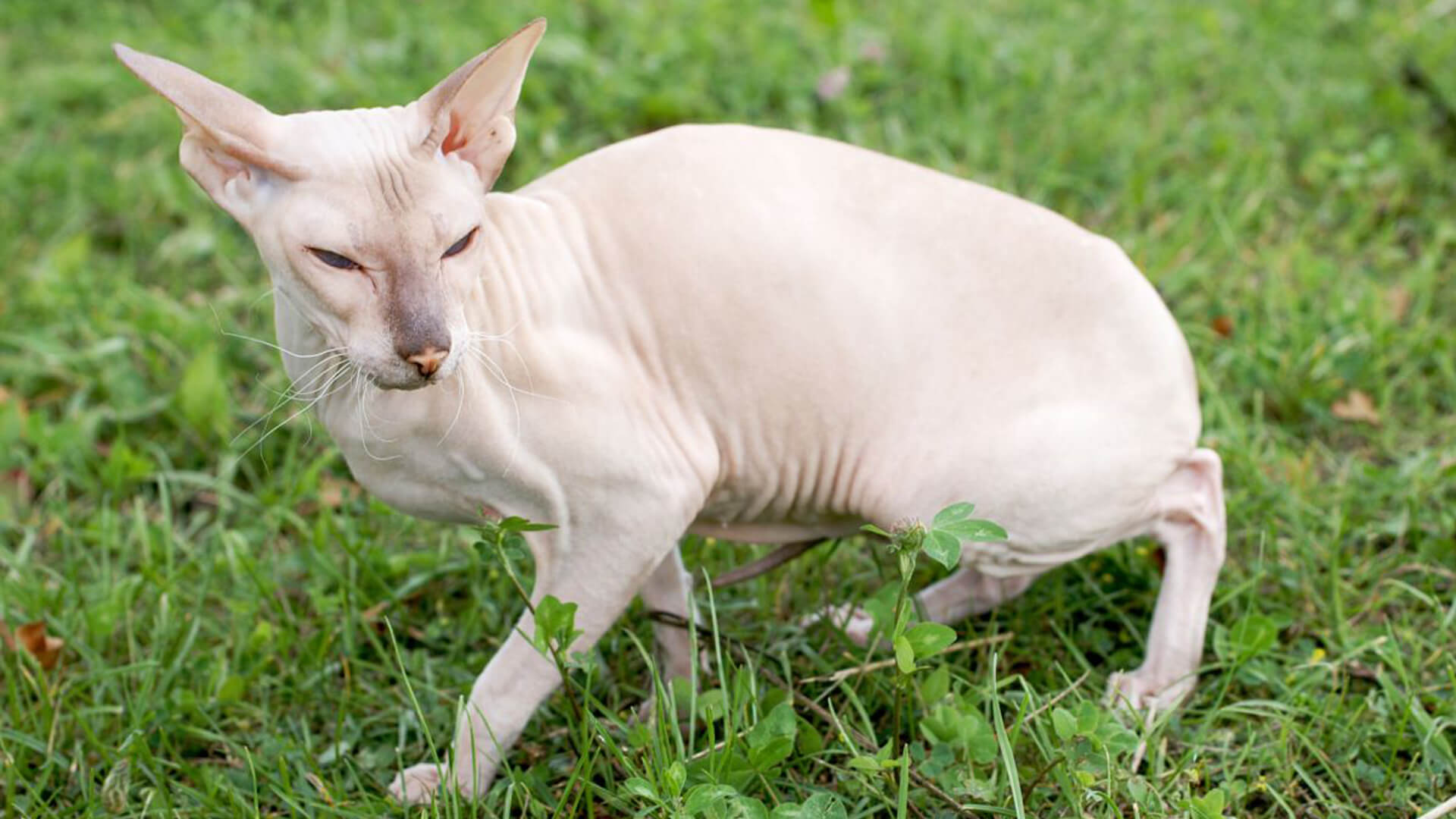Peterbald: The Sleek and Affectionate Hairless Cat

History of the Peterbald
The Peterbald is a rare and elegant hairless cat breed that originated in Russia in the 1990s. It was created when breeder Olga S. Mironova crossed a Don Sphynx (Donskoy) with an Oriental Shorthair, resulting in a sleek, muscular cat with a hairless or very fine-coated appearance.
Unlike the Sphynx, which has a natural genetic mutation for hairlessness, the Peterbald’s lack of fur comes from a dominant gene, meaning that kittens can have various coat types, from completely bald to fine, velvety fuzz. The breed was officially recognized by The International Cat Association (TICA) in 1997 and has since gained a dedicated following among cat lovers who appreciate its affectionate nature and unique look.
Popularity of the Peterbald
Although still a rare breed, the Peterbald has become increasingly popular in Russia, Europe, and North America due to its graceful appearance, intelligence, and dog-like loyalty. It is especially favored by cat enthusiasts who enjoy hairless or low-shedding breeds.
Physical Traits of the Peterbald
The Peterbald is a medium-sized, slender cat with a distinctive, hairless or fine-coated body.
• Coat: Can range from completely bald to having a fine, velvety suede-like texture.
• Coat Variations:
o Bald: Completely hairless.
o Chamois: Slight fuzz but mostly bald.
o Velour: Short, fine, peach-fuzz-like coat.
o Brush: A wiry, slightly rough coat.
• Colors: Comes in a variety of colors and patterns, including solid, tabby, and tortoiseshell.
• Size: Medium-sized, weighing between 6 to 12 pounds.
• Head & Expression: Long, wedge-shaped head with large, almond-shaped eyes in shades of green, blue, or gold.
• Ears: Large, bat-like, and wide-set, giving a curious and alert look.
• Tail: Long and whip-like, often compared to a rat’s tail due to its thinness.
• Body: Long, lean, and muscular, built for speed and agility.
Behavioral Traits of the Peterbald
The Peterbald is known for its affectionate, social, and highly intelligent personality, making it an ideal companion for interactive households.
• Loyal and Affectionate: Forms strong bonds with its owners and follows them around like a dog.
• Highly Intelligent: Enjoys learning tricks, playing fetch, and solving puzzle toys.
• Social and Outgoing: Gets along well with children, other cats, and even dogs.
• Playful and Energetic: Loves climbing, chasing toys, and engaging in interactive play.
• Vocal and Expressive: Communicates with soft chirps, trills, and gentle meows.

Why Choose a Peterbald?
For those looking for a smart, affectionate, and low-shedding cat, the Peterbald is an excellent choice.
• Perfect for Allergy Sufferers: Produces less dander than fully-coated cats.
• Highly Social and Loving: Enjoys being around people and thrives on companionship.
• Low Grooming Needs: No fur means minimal shedding and brushing.
• Great for Multi-Pet Homes: Friendly and adaptable to living with other pets.
• Highly Trainable: Can learn commands, tricks, and even walk on a leash.
Caring for Your Peterbald
The Peterbald requires special skincare, warmth, and a high-protein diet to stay healthy.
• Grooming:
o Regular skin cleaning is required to prevent oil buildup.
o Ear cleaning is essential since they produce more wax than furry breeds.
• Exercise: Needs daily playtime to stay fit and mentally stimulated.
• Mental Stimulation: Enjoys puzzle feeders, interactive toys, and training.
• Nutrition: A high-protein diet supports their muscle tone and energy levels.
• Temperature Regulation:
o Sensitive to cold and should be kept in warm indoor environments.
o Some Peterbalds enjoy wearing sweaters or blankets for extra warmth.
Health Considerations
The Peterbald is generally a healthy breed, but due to its unique coat and genetics, some concerns include:
• Skin Sensitivity: Hairless skin is prone to sunburn, dryness, and irritation.
• Temperature Sensitivity: Requires a warm, draft-free environment.
• Dental Issues: Due to their delicate facial structure, they may be prone to gum disease or tooth decay.
• Obesity Prevention: Despite their active nature, proper portion control is important.

Comparisons to Other Hairless Breeds
Compared to the Sphynx, the Peterbald has a more slender and Oriental-style body, whereas the Sphynx is more muscular and round-bodied. Unlike the Donskoy, which has wrinkled skin, the Peterbald’s skin is smoother and tighter.
Compared to the Devon Rex, which also has a unique coat, the Peterbald is more active and has less fur variation.
Is the Peterbald Right for You?
The Peterbald is perfect for cat lovers who want a unique, intelligent, and affectionate pet. If you enjoy interactive play, social cats, and a pet that thrives on companionship, the Peterbald will be a wonderful choice.
However, if you prefer a low-maintenance breed that doesn’t require special skincare or warmth, this breed may not be the best fit.
Ready to Welcome a Peterbald?
United Pet Club is here to help you find the perfect Peterbald companion. Whether you're looking to adopt or connect with trusted breeders, we provide valuable resources to guide you every step of the way.
Explore our platform to learn more about Peterbald cats, their history, and how to care for them. Contact United Pet Club today to start your journey with this sleek and affectionate feline!
